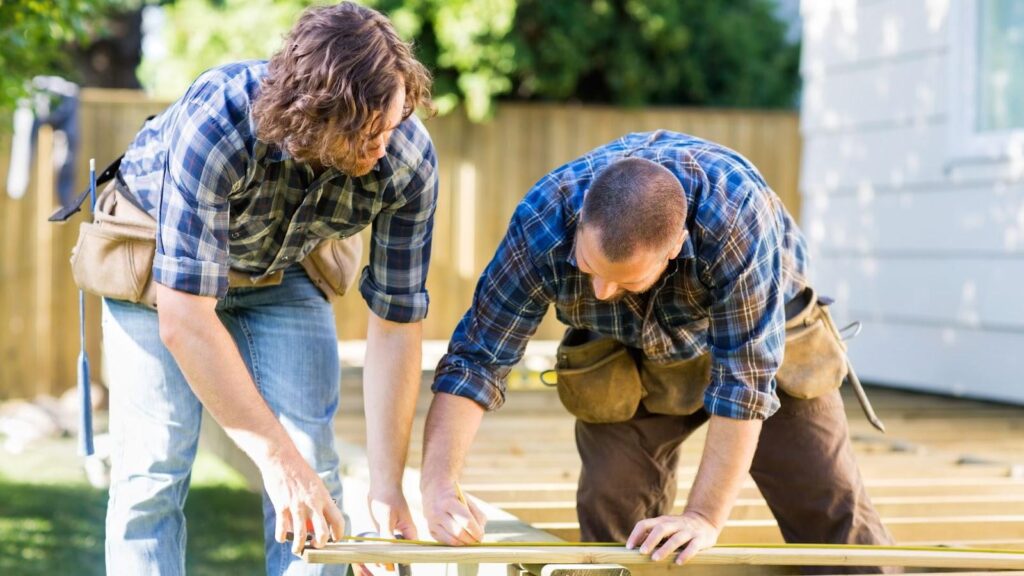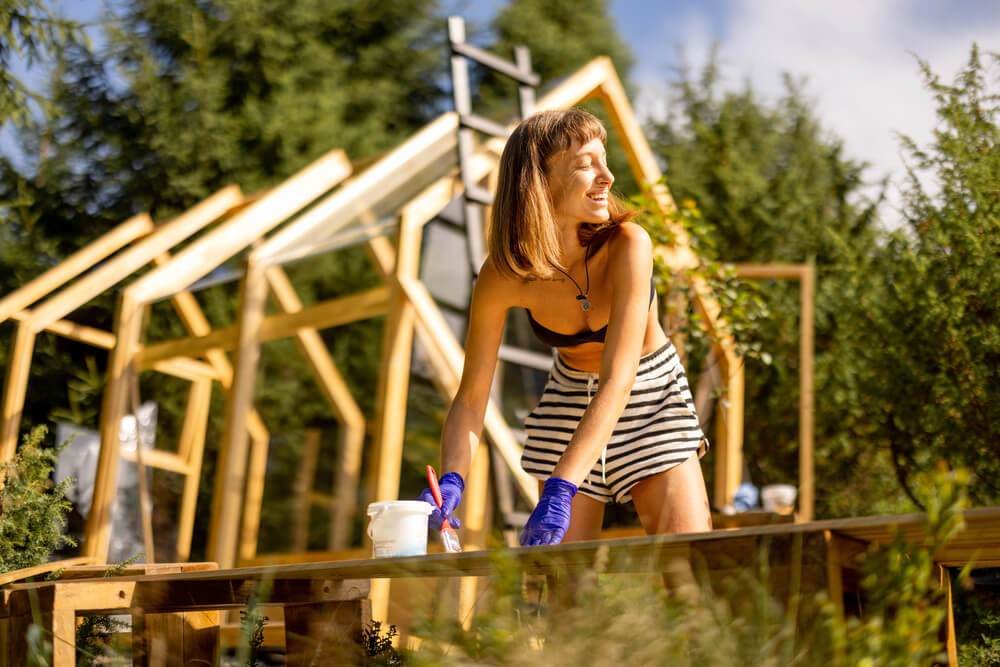
Construction sites, especially outdoor ones, pose unique safety challenges due to changing weather, rough terrain, and the use of heavy machinery. Whether you’re a seasoned contractor or a DIY enthusiast, following safety protocols is essential to protect yourself and your team from injury. Here are the top 5 safety tips to ensure your outdoor construction project runs smoothly and without incident.
1. Wear the Proper Personal Protective Equipment (PPE)
Personal protective equipment (PPE) is your first line of defense against accidents. Regardless of the size of the project, always ensure you and your team are wearing the appropriate PPE for the job. At a minimum, this should include:
- Hard hats: Protecting your head from falling debris is critical on any construction site.
- Steel-toed boots: These will protect your feet from heavy equipment or materials that may accidentally fall.
- Safety gloves: These provide a buffer between your hands and sharp or rough surfaces, preventing cuts and abrasions.
- High-visibility vests: If your project is near traffic or other active zones, high-visibility gear will help ensure workers are seen.
- Eye and hearing protection: For tasks involving heavy machinery or power tools, eye protection (safety goggles) and earplugs or earmuffs are essential.
By ensuring that everyone on site wears the proper gear, you minimize the risk of injuries that could otherwise cause delays or even permanent harm. Incorporating PPE monitoring systems further enhances this effort by ensuring compliance in real time.
2. Maintain Safe Work Zones
Outdoor construction projects are often in environments where weather conditions, uneven ground, and other external factors can make working conditions unpredictable. To reduce accidents:
- Establish clear boundaries: Mark out the work zone with safety barriers, signs, and cones to separate active areas from pedestrian traffic.
- Use spotters and flaggers: When working with heavy machinery, especially on narrow or congested sites, make sure there are designated flaggers to guide the equipment safely.
- Level the ground: Uneven terrain increases the risk of tripping or tipping equipment. Take time to level the ground when possible and inspect the site regularly for hazards like loose rocks or puddles that could lead to slips.
Additionally, keep walkways clear of debris and clutter. A tidy work area significantly reduces the chance of accidents, including trips, falls, and equipment malfunctions.
3. Be Aware of Weather Conditions
Outdoor construction projects are subject to the whims of Mother Nature, and severe weather can dramatically affect safety. Rain, wind, and extreme temperatures pose serious risks to workers, machinery, and equipment. Here’s how to mitigate those risks:
- Monitor the forecast: Always check weather reports before starting the day, and be prepared for sudden changes in conditions.
- Take appropriate action: If high winds or storms are expected, delay outdoor work or secure materials and tools that could become hazardous if blown around. On particularly hot days, ensure hydration breaks are frequent, and provide shaded rest areas to prevent heat-related illnesses.
- Proper clothing for the weather: In hot weather, lightweight, breathable clothing can help prevent heat exhaustion, while in colder conditions, make sure workers have the proper layers to avoid hypothermia.
Adapt your work schedule to account for bad weather, and don’t hesitate to shut down operations if conditions become unsafe.
4. Use and Maintain Equipment Properly
Construction sites often rely on heavy machinery, power tools, and other equipment that can be dangerous if not used properly. Always ensure that equipment is well-maintained and used in accordance with the manufacturer’s guidelines:
- Inspect equipment daily: Before starting work, conduct a thorough inspection of all tools and machinery to ensure they are in good working order. Look for loose parts, leaks, or signs of wear.
- Train workers on proper operation: Make sure all workers are trained to use machinery correctly and that they are familiar with safety procedures for each tool.
- Keep equipment in safe operating conditions: Regularly maintain and service all machinery to avoid malfunctions that could lead to accidents. For example, ensure that cranes are calibrated, power tools are checked for damage, and vehicles have up-to-date safety features.
Proper training and maintenance can prevent many of the accidents that occur on construction sites due to faulty or improperly used equipment.
5. First Aid Certification and Emergency Preparedness
Accidents can still happen, no matter how safe the site is, so it’s essential to be prepared for emergencies. One of the best ways to ensure a quick and efficient response to injuries is by having staff members with a first aid certificate.
- First aid training: At least one person on site should have a valid first aid and CPR certification. This knowledge can be life-saving in the event of a serious injury.
- First aid kits: Ensure that fully stocked first aid kits are available on-site and easily accessible. Include supplies for basic injuries (bandages, antiseptics) as well as more serious items like splints or burn kits.
- Emergency plan: Have a clear emergency response plan in place. Ensure all workers know the location of the nearest hospital or medical facility and have emergency contact information readily available.
Being prepared for emergencies reduces response times and helps ensure that injuries, if they do occur, are managed swiftly and efficiently.
Safety Priorities

Safety should always be a top priority when working on outdoor construction projects. By following these five safety tips—wearing the right PPE, maintaining safe work zones, being aware of weather conditions, properly using and maintaining equipment, and having first aid certification on hand—you can significantly reduce the risks associated with construction work. Remember, a safe worksite is a productive one, and taking the necessary precautions not only protects workers but also helps ensure the success and efficiency of the project.
- 2shares
- Facebook0
- Pinterest2
- Twitter0



